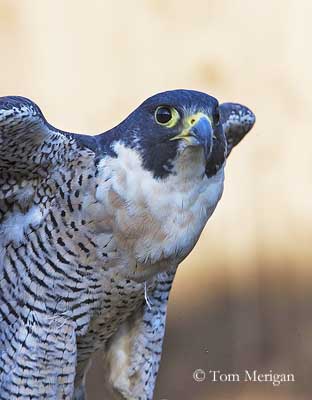
These are only two examples, but several species have been threatened in the past, and thanks to several actions, they are today increasing or secure. But an attentive survey is necessary.
Text by Nicole Bouglouan
Photographers:
Audevard Aurélien
OUESSANT DIGISCOPING
Beamonte José Luís
Pájaros de España
Colón Archilla Alfredo D.
Puerto Rico Wildlife
Chrétien Marc
MURINUS
Jean Michel Fenerole
Photos d’Oiseaux
Garvie Steve
RAINBIRDER Photo galleries
Grey Tom
Tom Grey's Bird Pictures
Guillet Paul
Photos d'Oiseaux
Patrick Ingremeau
TAMANDUA
Jordan Eduardo Andrés
MIS AVES - AVES DE ARGENTINA
Lortie René
http://rlortie.ca/
Merigan Tom
Tom Merigan’s Photo Galleries
Montocchio Eugène
Galerie Photos Nature
Moul Bob
Nature Photography
Peers Jean Michel
JMPN PHOTOGRAPHIE
Jean Marc Rabby
Des Ailes et des Plumes
Callie de Wet
GALLERY
Philippe et Aline Wolfer
GALERIE
Bouglouan Nicole
PHOTOGRAPHIC RAMBLE
Sources:
HANDBOOK OF THE BIRDS OF THE WORLD Vol 2 by Josep del Hoyo-Andrew Elliot-Jordi Sargatal - Lynx Edicions - ISBN: 8487334156
BIRDS OF PREY OF AFRICA AND ITS ISLANDS by Alan and Meg Kemp - Struik Publishers - ISBN: 1770073698
GUIDE DES RAPACES DIURNES – Europe, Afrique du Nord et Moyen-Orient de Benny Génsbol – Delachaux et Niestlé – ISBN : 2603013270
HAWKS, EAGLES AND FALCONS OF NORTH AMERICA by Paul A. Johnsgard - Smithsonian Institution Press - ISBN: 1560989467
FAMILY FALCONIDAE
Caracaras, Falcons, Falconets, Forest-falcons,
Kestrels, Merlin, Hobbies
The family Falconidae includes small to medium-sized raptors, living in all continents except Antarctica, and occupying several types of habitats, from tundra to desert and tropical forest.
Typical falcons have long pointed wings and fast flight, strong hooked bill and sharp curved talons adapted to their hunting behaviour.
They have relatively small body, with large and powerful pectoral muscles in the faster fliers.

Falco peregrinus
Falconids usually show varied plumages with combinations of brown, chestnut, grey, black and white, with often mottled, barred or streaked underparts.
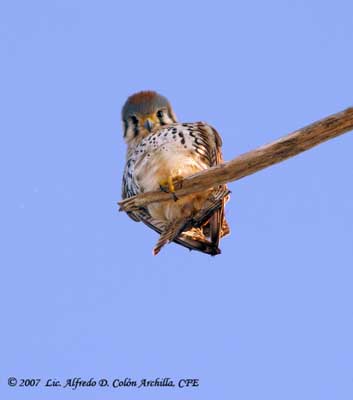
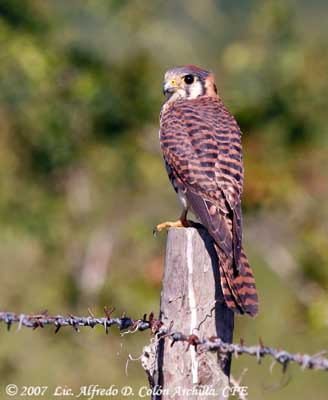
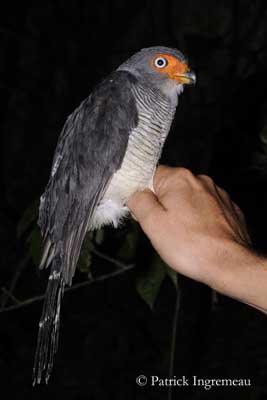
According to the habitat, the colour can be more or less dark or pale.
Several birds have different morphs varying with the region. The birds living in arid areas usually have paler colours, whereas some forest-falcons (genus Micrastur) are rufous or melanistic.
Lined Forest Falcon
Micrastur gilvicollis
The immatures tend to be browner than the adults with duller plumage pattern and pale-edged feathers.
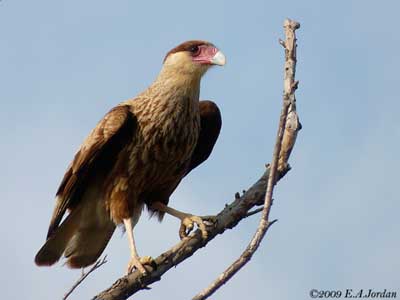
The males of many species often have bolder appearance than the females, and some of them show marked difference between sexes.
In most kestrels, adult males are greyer than females and immatures.
The differences between both sexes usually appear at the end of their first year, during the first moult.

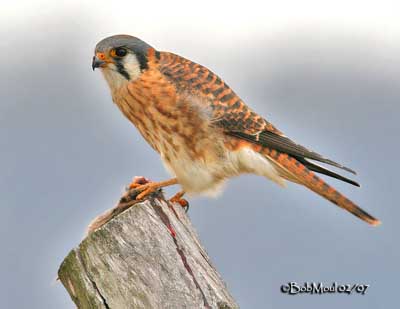
Some New World falconids can have distinctive features such as small ear ruff, formed with narrow, curved and stiff feathers. The caracaras of genus Caracara (Polyborus) show a flat crest on the rear crown, whereas the birds of genus Phalcoboenus have some curled feathers on the crown.
The Laughing Falcon (Herpethoteres cachinnans) is somewhat different with its brushy crest and collar.
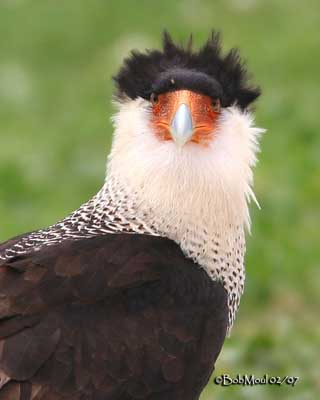
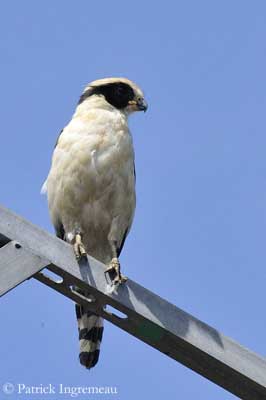
Northern Crested Caracara - Caracara Cheriway
Laughing Falcon - Herpethoteres cachinnans
Except the caracaras which have brown or hazel irises, the falconids have a shortened face and often brown eyes. The exceptions are the Greater Kestrel (Falco rupicoloides) with white eyes, and some forest-falcons with orange-brown eyes. However, the Lined Forest Falcon (Micrastur gilvicollis) has white eyes too.
The hobbies, more crepuscular than the other species, have larger eyes.
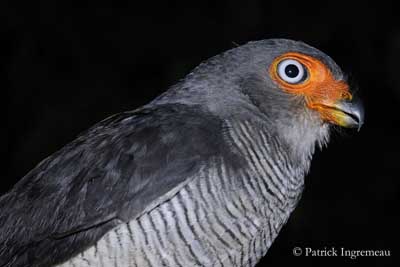

Lined Forest Falcon - Micrastur gilvicollis
Most species have bright yellow eye-ring, cere, legs and feet, but some of them may have grey bare parts as in Black Falcon (Falco subniger) and Brown Falcon (Falco berigora), or orange as in the Red-footed Falcon (Falco vespertinus). Immatures usually have grey bare parts, becoming yellow when growing.

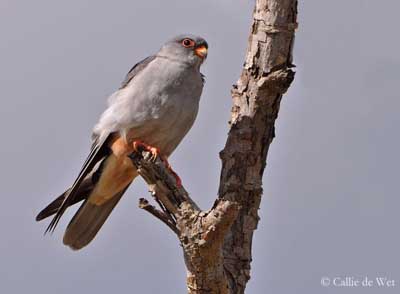
Some caracaras, mainly Phalcoboenus and Polyborus genera, have bare and bright-coloured sides of the face, throat and crop. All the members of genus Falco show a dark malar stripe.
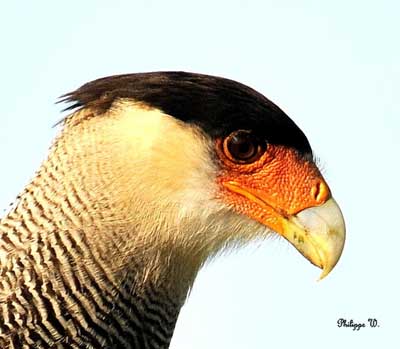
The hooked bill is adapted to the hunting behaviour. The Peregrine Falcon (Falco peregrinus) needs a strong bill to kill and dismantle its relatively large preys. The Brown Falcon has narrower, less hooked bill but larger gape, allowing it to swallow some of its smaller preys whole.
Some caracaras such as the genera Daptrius and Phalcoboenus which are less predatory have almost unhooked, weak bill. On the other hand, the Crested Caracara (Polyborus plancus) has large, strongly hooked and laterally compressed bill.
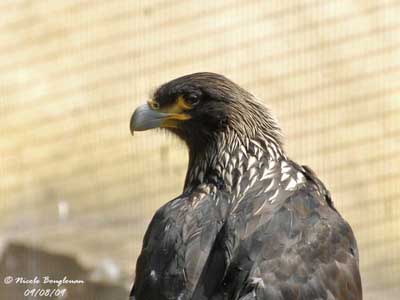
Phalcoboenus australis
Another important tool for falconids: the talons. They grasp their preys with their talons, and mainly the strong hind toe and the elongated middle toe.
The talons can be thin and slightly curved in terrestrial caracaras, sharp in Daptrius and blunt in Phalcoboenus and Polyborus.
In other species, they are highly curved and sharp, and the hind toe of the larger Falco species is quite massive.
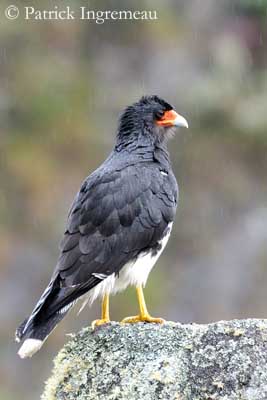
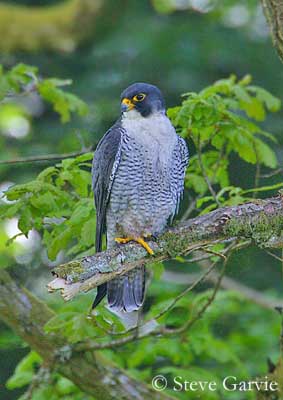
Phalcoboenus megalopterus
Falco peregrinus
The tarsus can be long and thick, with “scales” to protect the leg and the feet in terrestrial species such as kestrels and Brown Falcon. Other species such as Peregrine Falcon and Black Falcon have short, thick legs, giving them great force to hit their large preys.
The Laughing Falcon has stout tarsi and short toes, covered in hexagonal scales, typical of the snake-eating raptors.
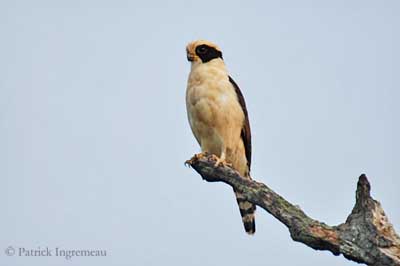
Herpethoteres cachinnans
These beautiful tools, with in addition an excellent sight, make these raptors very good hunters. They usually hunt from height and locate the preys by sight, and maybe by hearing too. The forest-falcons use sound to detect the preys.
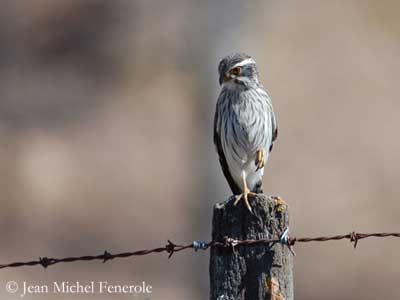
Spiziapteryx circumcincta
The falconids have relatively simple calls described as cackle, chatter, squawk, croak, wail and whine. The range of calls is similar in male and female, with shriller sounds in males. Their voices are rather harsh and strident, with repeated monosyllables which vary in pitch and frequency, according to the situation.
The members of genus Polyborus and Phalcoboenus utter raucous territorial calls accompanied with gestures. They give short clicks and grumbles at nest when disturbed.
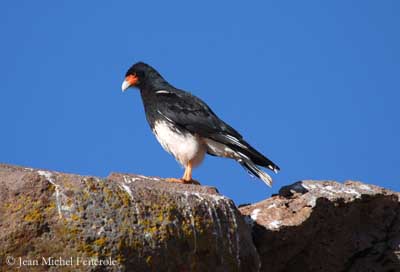
Phalcoboenus megalopterus
The falconids are fast-flying birds of prey, and they are able to catch birds on the wing as large members of genus Falco and some falconets do. The smallest falconids, those of genus Microhierax, catch large flying insects in the air, but not birds.

We can find two groups of hunters.
The “searchers” spend most of their time searching, and hunt small, abundant preys, often easy to find and catch.
“The attackers” usually hunt larger preys, less numerous and more agile. They put great effort into the capture and have lower success rates than searchers.
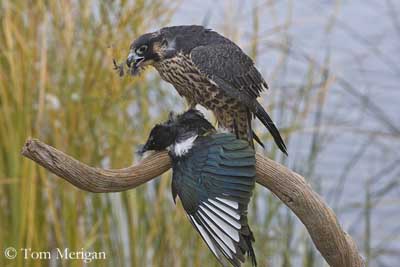
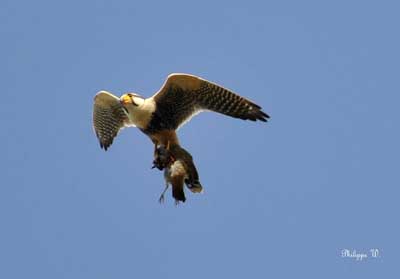
Peregrine Falcon - Falco peregrinus
Several techniques are used and first, the kleptoparasitism or to steal the food from other raptors, is performed by the Crested Caracara and numerous other species of falcons. Within the genus Falco, caching, to keep food for later use, is quite common. This food is often given to the chicks at nest during the breeding season.
Falcons can be terrestrial and catch mammals, large insects, reptiles and birds on the ground. They also hunt from a perch, and once the prey is located, they swoop down onto the victim and catch it. They also rob chicks and young birds in their nest, while parents are away for feeding.
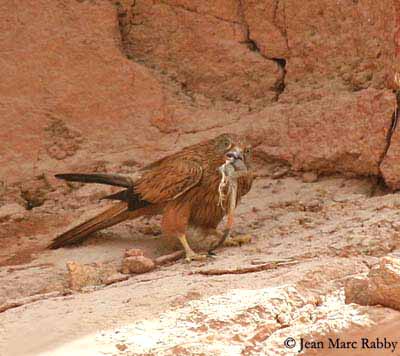
Falco alopex
The forest-falcons sometimes shake the branches with their feet to flush the preys. Some of them can run and pursue the prey on the ground. They also call from a concealed place to attract birds close enough to be caught.
Several falcons, such as the Peregrine Falcon and the Orange-breasted Falcon (Falco deiroleucus), catch the preys in the air thanks to their very long toes. They are very agile and have fast fly, and are able to pursue the prey at high speed.

Falco peregrinus
Other species such as Eleonora’s Falcons (Falco eleonorae) sometimes pursue the prey in groups with better success rates than the bird hunting singly.
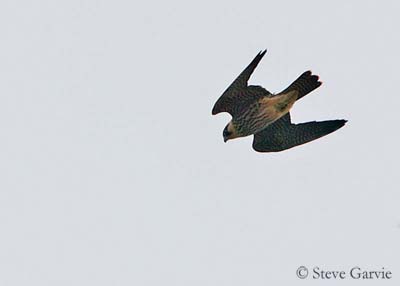
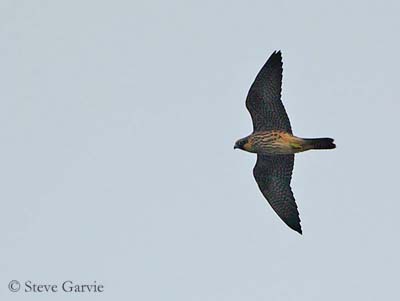
Lesser and American Kestrels hunt from perch, by hovering, and also in small groups, especially when insects are swarming.
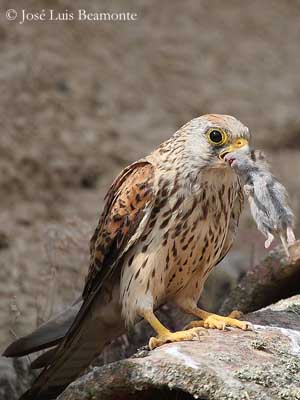
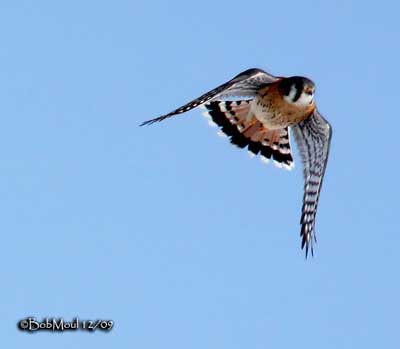
Lesser Kestrel - Falco naumanni
A ground-hunting species such as the Brown Falcon catches larges insects, but also frogs, lizards, snakes, rabbits and birds.
Falconids also take carrion when living preys are rarer. The Crested Caracara regularly feeds on carrion where dominance and hierarchy are established as in vultures. But it can kill preys as large as lambs, as the Striated Caracara (Phalcoboenus australis) also does.
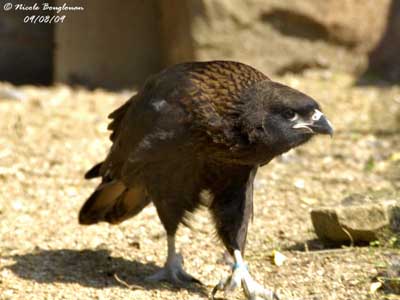
The small Milvago caracaras frequent cultivated areas. The Chimango Caracara (Milvago chimango) follows the ploughs to glean worms, insects and various invertebrates.
The Yellow-headed Caracara (Milvago chimachima) takes ticks from the back of cattle, and feeds on eggs, fruit of oil palms, grain and horse dung.

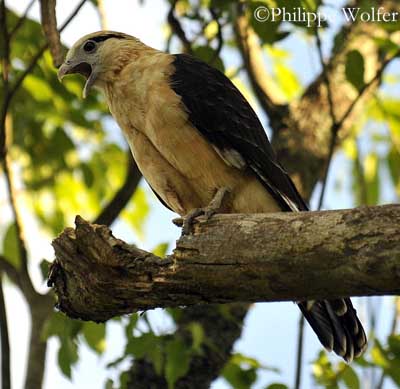
The deep forest caracaras of genus Daptrius eat numerous wasps and fruit. The Red-throated Caracara (Ibycter americanus) forages frequently in the understorey in mature primary forests, and perform food sharing within their social cohesion.
The Microhierax species hunt like flycatchers or shrikes, from an exposed perch, making rapid dashes at insects, birds or lizards.
And finally, the Laughing Falcon is a snake-eater with 90% of its diet made up by terrestrial or arboreal snakes. The venomous species have the head removed.
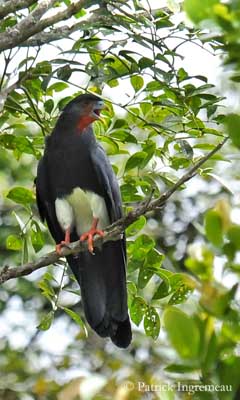

Ibycter americanus
Herpethoteres cachinnans
The falconids could be solitary predators, and several species hunt alone or in pairs, but it may come as a surprise that relatively numerous species are gregarious outside the breeding season.
The Red-throated Caracara is an example of this social behaviour. A small group of five to six birds defend a territory all year round, and hunt and forage together in the forest because the result is better with several eyes searching together than only one pair! This behaviour is accompanied by loud contact calls. They share the large preys with one bird feeding another.
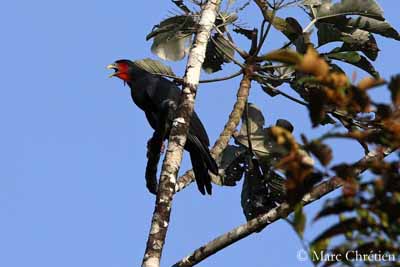
Ibycter americanus
The larger falcons, the most predatory species, also hunt in co-operative pairs and share the preys. They can gather in mixed species at abundant food sources, with some birds as sentinels.
The territoriality occurs in most falconids. They defend a small or large area, according to the species. The Gyrfalcon (Falco rusticolus) may have an area of about 1000 km². This territory can be permanent all year round, but for others, it is only defended during the breeding season.
The migratory species such as the American Kestrel, can also defend their winter territory.

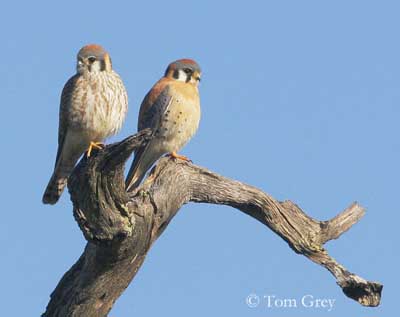
They defend their areas against other falcons, but also against predators and intruders. The birds which forage and nest together perform collective aerial defence against larger birds such as eagles, but on the ground, they become solitary nesters with only a small space per bird. This is the case of the Eleonora’s Falcon.

Falco eleonorae
During the breeding season, some falcons such as the Amur Falcon (Falco amurensis), gather and soar in flocks, chattering and descending little by little close to the ground in formation, in a wave-like pattern, and turning abruptly in unison to flash their wings. Sometimes, aerobatics are used as territorial displays, but mainly during the breeding season.
Several species hunt, nest and roost together. They use roosts where they gather in large numbers, sometimes in trees in city parks. Around the dusk, they gather in flocks, and arrive in small groups at the nighttimes roost. Some species can roost with other birds, such as other falcons and Corvids. They disperse to their usual feeding areas at dawn.
Pairs and family groups of African Pygmy falcons (Polihierax semitorquatus) sleep together at roost for warmth during the cold nights in desert.
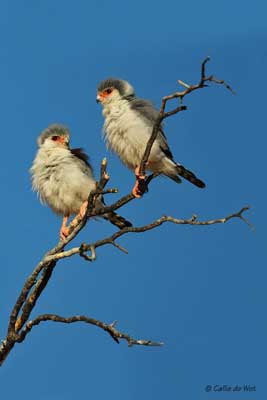
Polihierax semitorquatus
The falconids are active by day and leave the roost at dawn to reach their feeding areas. In the hotter weathers, the Eurasian Hobbies (Falco subbuteo) and Bat Falcons (Falco rufigularis) roost by day, and hunt at dusk.
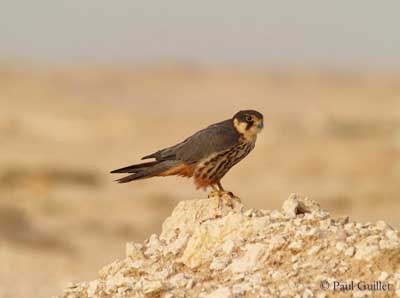
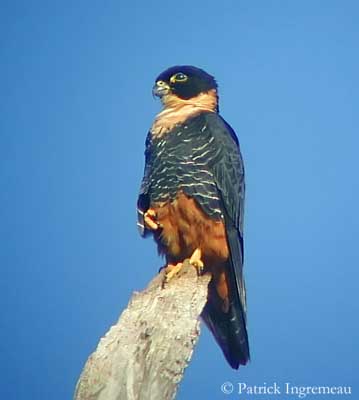
Falconids also roost during heavy rains, but they occasionally can hunt by night. The Common Kestrel (Falco tinnunculus) can hunt by moonlight.
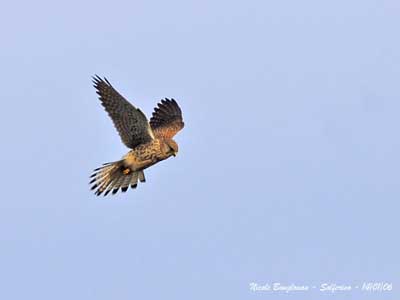
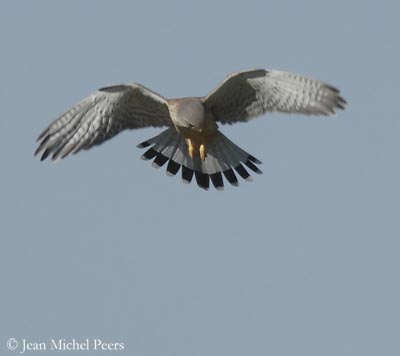
The falconids are usually monogamous and solitary nesters. Both sexes share the nesting duties, with the female brooding, feeding and defending the chicks at nest, while the male hunts for the family.
However, about 10% of the species are colonial nesters, ranging from dense colonies in Eleonora’s Falcon, to loose colonies in the Striated Caracara (Phalcoboenus autralis). The Lesser Kestrels may include about 100 pairs in ledges of a rockface. Within these colonies, each pair is solitary nester.
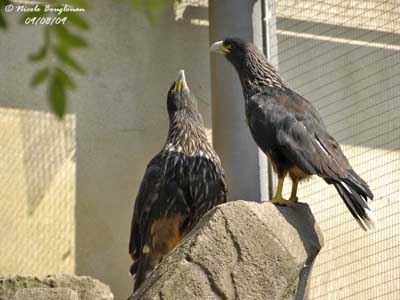
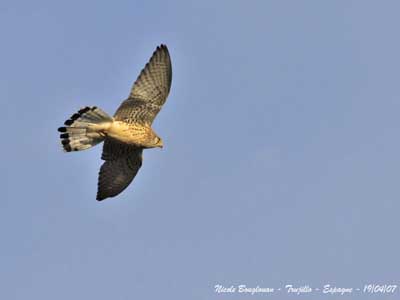

In contrast, the Red-throated Caracara performs co-operative breeding, a unique behaviour in falconids. The communal nesters usually depend on food sources and suitable habitat where the nest-sites are concentrated.
Ibycter americanus
Some birds such as Merlin, Peregrine Falcon and Common Kestrel can be polygamous, with one male attending two females at close sites.
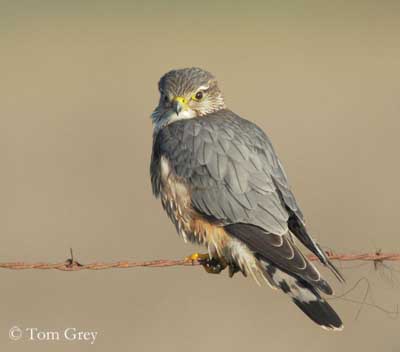

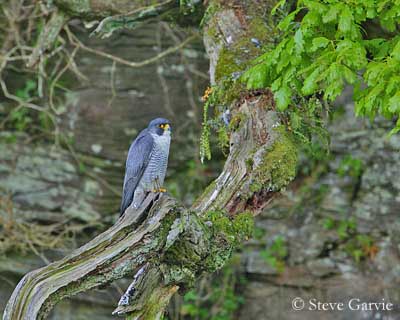
The breeding season coincides with abundant or increasing food sources, and often occurs between the late winter and the early summer.
The resident species have permanent pair-bonds. In migratory species, the male returns first to the breeding grounds. It performs spectacular aerial territorial and courtship displays, thanks to its fast fly and agility.
The mates also soar together, with one birds diving towards the other. The latter flies on its back and holds the talons upwards, and often, both birds grasp and fly down together before to separate and rise again. These displays are accompanied with calls and various vocalises.
Aerial chases are also observed, as well between mates as with rivals.
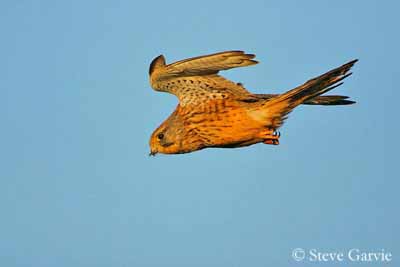
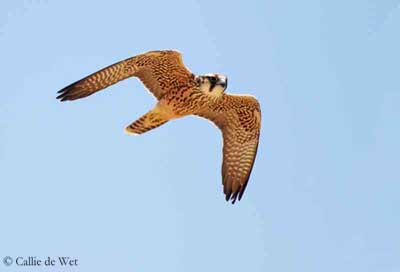
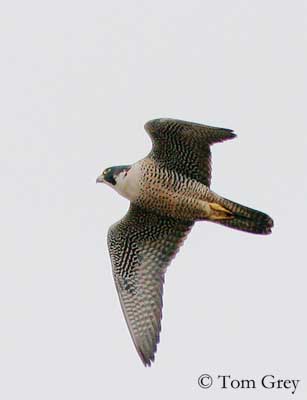
Falco peregrinus
Some species join at nest and perform duets, such as in Laughing Falcon.
In several species, the male follows the female to potential nest-sites, and they may display there. The displays at perch include bowing, crouching by the female and calls, often leading to copulation. They often copulate numerous times during the pre-incubation period that enhances the chances of paternity.
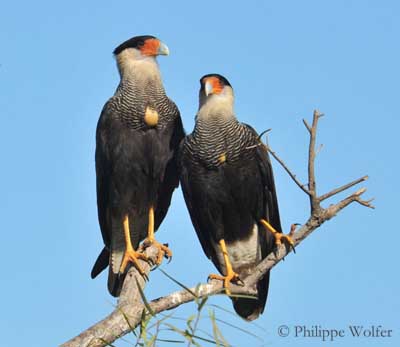
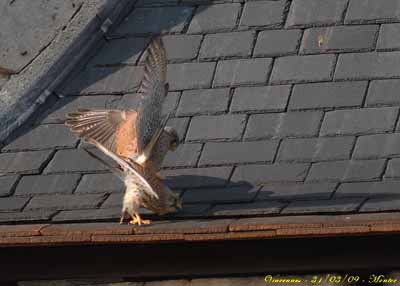
Courtship feeding and copulation are often connected because the poorly fed females tend to beg food to other males and copulate with them. In addition, the food offered during these displays helps the female to make fat reserves for egg formation, and to know that the male will be a good father, able to feed its family.
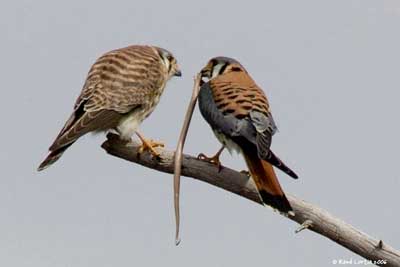
Falco sparverius
Usually, the falconids do not build a nest, but arrange the substrate of the site in order to form a depression for the eggs. Some species add some bark or leaves to line the cup, whereas the caracaras line it with wool, dung and other materials. Several falcons use abandoned corvids’ nests.
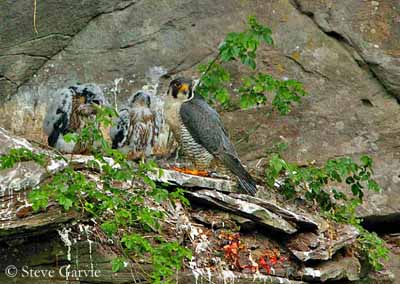
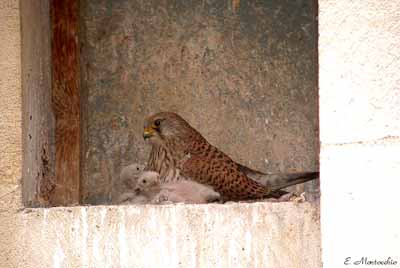
Peregrine Falcon - Falco peregrinus
The nest-sites range from cliffs, large tree cavities, on the ground under a rock, abandoned holes by woodpeckers, in the huge nests of the Sociable Weaver or Monk Parakeets, to ledges on power pylons and large stick nests built by other species such as Hamerkops. These sites are often sheltered from the wind, the heat and the rain.
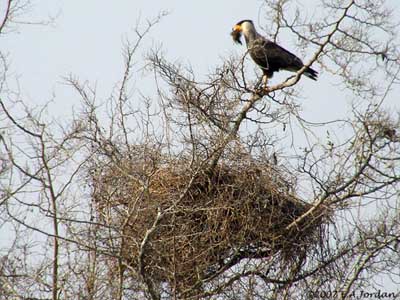
Caracara plancus
Many falconids lay 3-4 eggs per clutch, with more in kestrels (6 or more) and less in hobbies (2-3). Also 2-3 eggs in caracaras, whereas the Laughing Falcon lays only one. If the eggs are lost, several species a replacement clutch.
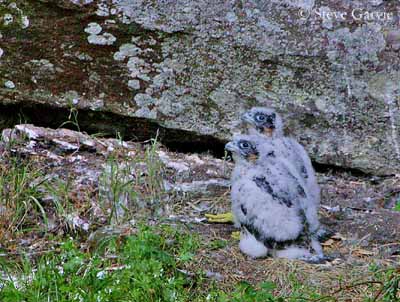
Falco peregrinus
The incubation is mainly carried out by the female, but the male may sit on the nest for short periods while she is feeding or preening. The period lasts from 28 days in falconets and small species, up to 35 days for the large Gyrfalcon. After the hatching, the adults remove or eat the eggshells. The chicks are semi-altricial and covered in sparse white down. The female broods them during the first ten days.
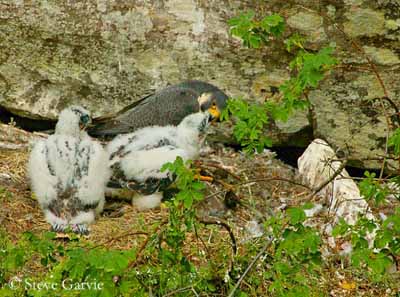
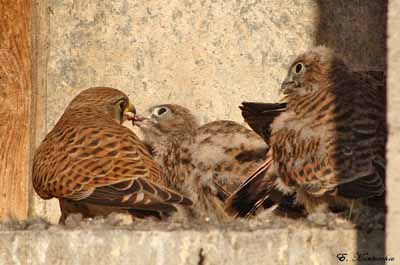
The young grow rapidly with the food offered by the adults, often by the female which receives the preys from the male, at nest or close to it, even in flight for some species. They fledge about one month for small falcons, and up to 50 days for the largest birds. In caracaras, fledging may occur about two months after hatching.
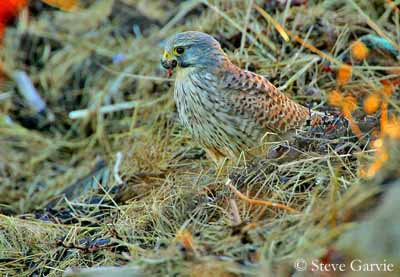
Falco tinnunculus
After fledging, the young return at nest to sleep and to be fed, but they remain in the vicinity during the day. They are attended by their parents and especially by the male before to become independent. Then, they accompany the adults to the feeding grounds and leave after a period which may last several weeks or months, according to the species.
The small species can breed at one year old, even without the complete adult plumage. On the other hand, the larger falcons breed at two or three years old.
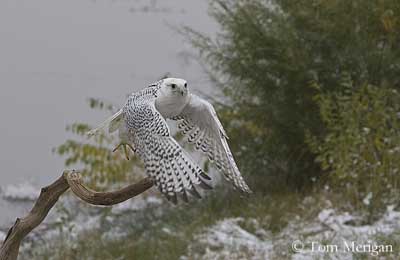

The species living in low latitudes and tropical regions are sedentary or dispersive. This is the case of Forest-falcons, falconets and caracaras.
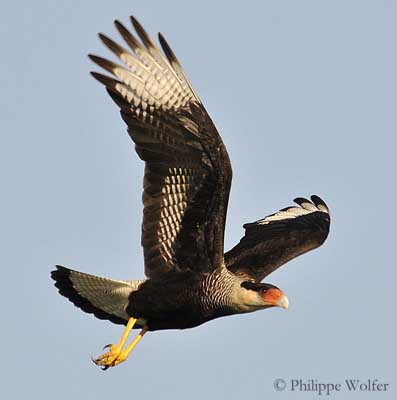
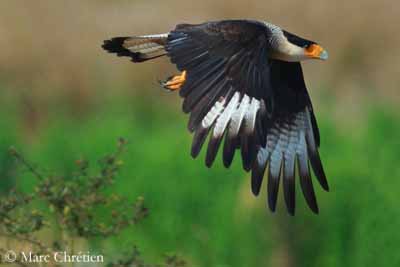
The members of the genus Falco tend to be more migratory, and travel by day. The birds perform powerful flight and lose weight during the trip. Other species are only partial migrants, according to the weather and the food resources. The adults are less migratory than the young birds, and often remain on their breeding grounds.
These superb raptors are threatened by habitat loss with deforestation and degradation of their breeding and feeding areas, and the chemical pollution which involve thin, weak eggshells, even several years after leaving their use.
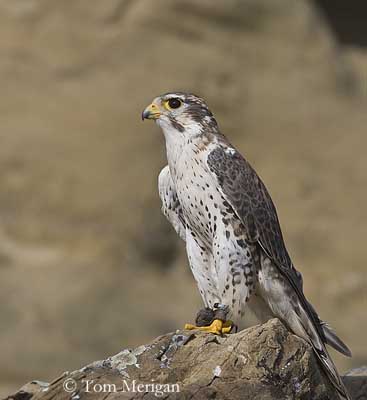
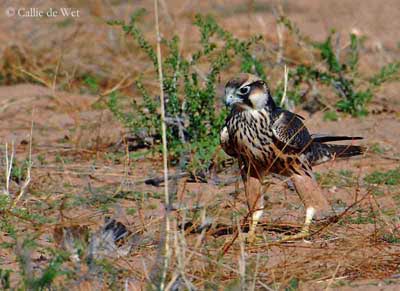
Falco mexicanus
Lanner Falcon
Falco biarmicus
(immature)
However, some species such as the Aplomado Falcon (Falco femoralis), have benefited from the deforestation. But this one has suffered large declines due to pesticides. This species is the object of a captive breeding program with reintroduction.

Falco femoralis
The Peregrine Falcon was exterminated in Eastern USA and Southern Canada in the mid-1970’s. Thanks to deliberate and conscious actions of humans with the banning of pesticides and the release of large numbers of captive-bred falcons, the populations have increased and are today more stable.
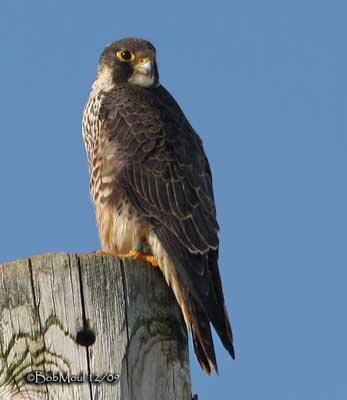
Falco peregrinus